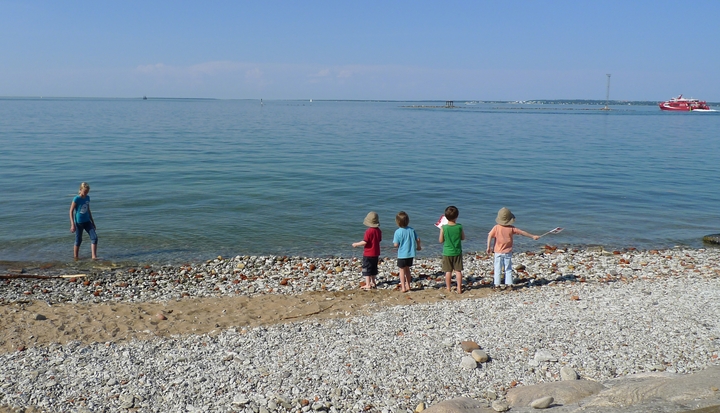Kalarand
by Toomas Paaver, Teele Pehk and Triin Talk
Location: Kalaranna 1 (in Kalamaja district)
Duration: 12 June – 22 October 2011
Kalarand from LIFT11 on Vimeo.

Kalarand (‘Fishermen’s Beach’) was historically an area for fish processing, a boat harbour and bathing site located on a stretch of shore between the Linnahall and the Patarei fortress. During the Soviet era, Kalarand was turned into a border zone and entirely closed to the public. After the restoration of Estonia’s independence, the military buildings and warehouses have been demolished and nature has gradually started to take over. At the same time, the place has been gaining popularity among local people as a bathing spot. Regardless of the widespread assumption that the site is polluted, practice has shown the water to be clean and the location naturally suitable for bathing.
In summer 2010, the authors of the installation made the first intervention attempt on their own initiative, setting up a changing cubicle at Kalarand. In summer 2011, the same initiative was repeated on a somewhat grander scale by building a more solid cabin, sunbathing platforms and a bench. Waste containers were provided and garbage collection was arranged for the summer season. A sample was taken of the water, which proved suitable for bathing. Although the area became cleaner and tidier, Kalarand remained a ‘swim-at-your-own-risk’ beach not listed among the official beaches of Tallinn and, therefore, without lifeguard service.
The refurbishing and presentation of Kalarand as a swim-at-your-own-risk beach drew attention to the plans concerning the entire area, aimed at a large residential and port development. Using the seaside as a beach and public space does not preclude housing and port construction because the total planned land and sea area is quite large and holds various opportunities.

